BEST 4WD AND AWD SUVs FOR 2O22
10 Best 4WD & AWD SUVs for 2022 with four-wheel traction:
With increased ground clearance and rugged looks, SUVs are sought after for not only their storage space but also their capability. SUVs with 4WD or AWD systems can deliver the maximum amount of traction for any situation, whether it be an off-road adventure or a trek through slippery on-road conditions. Used SUVs offer the confidence of 4WD or AWD, giving you the peace of mind that the vehicle will have the proper traction for the given driving situation.
Whether you are looking for something with plenty of passenger and cargo space with the confidence of AWD for inclement conditions, or some rugged 4WD vehicle with enough room for your next adventure, you are sure to find a suitable model on this list of the best used AWD and 4WD SUVs.
1. Jeep Wrangler
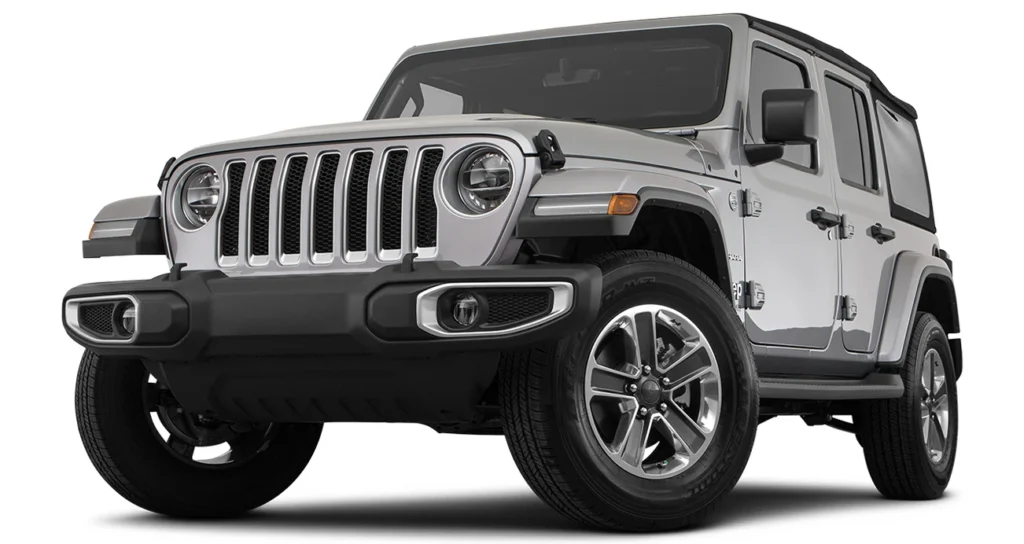
Pros
Locking differentials for improved off-road performance
Many engine choices to fit the owner’s needs
Removable soft or hard tops and doors make for a unique ownership experience
Cons
Off-road accolades come at the cost of interior refinement
Removable top and doors make for a louder cabin
Firmer ride than other vehicles on this list
The Jeep Wrangler has earned its off-road reputation thanks to its standard 4×4 driveline, solid axels, and other off-road tech. Completely redesigned for the 2018 model year, the top-tier Rubicon hosts Jeep’s Rock-Trac 4×4®, which offers a two-speed transfer case that allows for maneuvering over tricky terrain, such as rocks, at low speeds. All other 2018–2022 Wrangler trims feature the Command-Trac 4×4® System, which allows drivers the option to switch between 2WD and 4WD on the fly at speeds up to 55 mph.
All Wrangler models are ready and capable for any adventure you can imagine, from finding a remote campsite to exploring Moab, and four-door models have enough cargo room behind the front row of seats for 72.4 cu-ft of cargo.
Additional features in the 2017–2022 Jeep Wrangler include:
Plug-In Hybrid, 2.0L Turbo, 3.0L diesel, and 392 cubic inch V8 engine choices.
Available locking differentials for optimal traction
Available as a two- or four-door model with removable roof
60/40 split-folding rear seat
2. Jeep Grand Cherokee
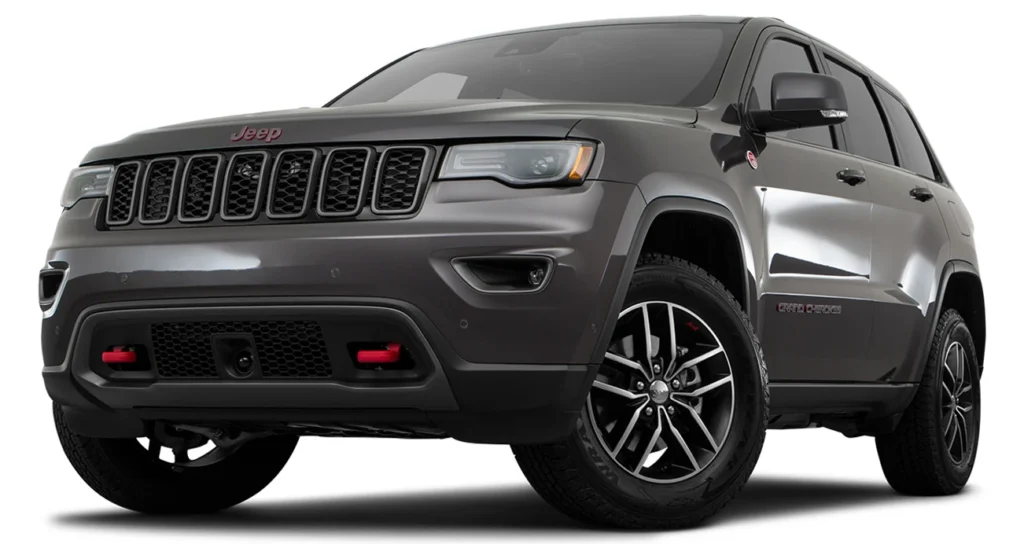
Pros
Very luxurious interior options available, including leather-wrapped dash and doors
Broad variety of trims, from commuter, off-road, and performance variants
Choice of V6, V8, or diesel engine options
Cons
Off-road accolades come at the cost of interior space
Transmission can be rough to shift in certain conditions
Firmer ride than others in this class
The 2017–2021 Jeep Grand Cherokee has some of the most robust 4WD tech out there. Built with Jeep’s Trail Rated heritage, the Grand Cherokee offers four different 4WD systems: Quadra-Trac I®—an AWD system that automatically sends power when wheel slippage is detected—and Quadra-Trac II®—which offers a two-speed transfer case for low-speed traction great for rock climbing.
The off-road-focused Trailhawk models up the ante even more with an electronic limited-slip rear differential that can ensure both rear tires spin equally in tough conditions. Sport-focused SRT and Trackhawk variants host the Quadra-Trac SRT® 4×4 System for increased high-speed performance on the track. The Grand Cherokee was given a full redesign for the 2022 model year with updated versions of their 4WD systems.
Additional features in the 2017–2021 Jeep Grand Cherokee include:
Selec-Terrain Traction Management System with multiple driver-selectable drive modes
- Available adjustable ride-height air suspension for more ground clearance
Options for any adventure: The track-focused Trackhawk
with over 700 horsepower and the trail-rated Trailhawk with additional ground clearance and advanced traction control
60/40 split-folding rear seat and up to 68.3 cu-ft of cargo space
3. Nissan Rogue
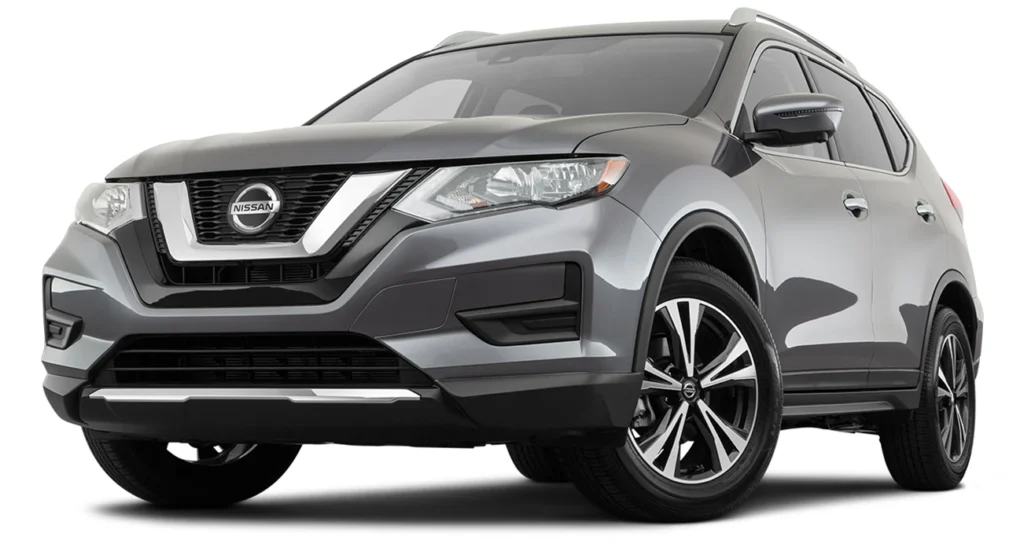
Pros
Comfortable Nissan Zero Gravity Seats
Great cargo capacity for a compact SUV
Many advanced technology features come standard
Cons
Acceleration is weak and listless
Transmission that can be slow to respond
Underwhelming interior design
The 2017–2020 model years of the Nissan Rogue were the last years of the second generation but came with intelligent all-wheel drive available on all trims. Second-generation (2014–2020) Rogues are surprisingly roomy for a small SUV, touting up to 70 cu-ft of cargo space with the rear seats folded flat.
For 2021, the Rogue received its first full redesign since the 2014 model year. Engineered to meet the needs of modern families and friendship groups, the 2021 Rogue has a wealth of driver-assistance features, with this robust tech now standard across the lineup. Nissan’s available AWD system will constantly monitor driving conditions and distribute power between the front and rear wheels to deliver maximum traction in most conditions.
Additional features in the 2017–2020 Nissan Rogue include:
Standard 2.5L four-cylinder engine
Hybrid powertrain offered in 2017–2020 model year
AWD lock that offers low-speed traction for snowy conditions
60/40 split-folding rear seat
4. Honda CR-V
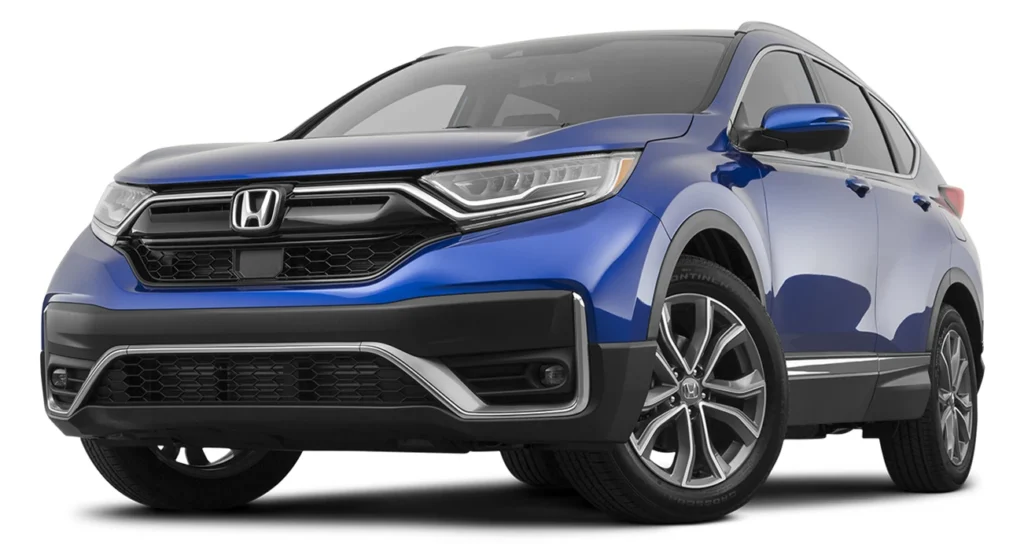
Pros
Simple to use AWD system
Enormous cargo capacity for a compact SUV
Available hybrid model
Cons
No manual control over the AWD system
Engines are on the low end of power for the segment
Difficult to use navigation system
Fully redesigned for the 2017 model year, the compact Honda CR-V moves into its fifth generation. All trims offer an available real-time AWD that can send a maximum of 40% of power to the rear wheels to give the vehicle traction in inclement conditions. The operation of the AWD system is automatic and completely seamless for the driver, allowing for more focus on steering the vehicle. Real-time AWD can also decouple the rear drive when AWD is not needed. For 2022, AWD is standard for the top Touring trim.
The CR-V has room for any adventure with its large 75.8 cu-ft of available space with the rear seats folded. Additional features in the 2017–2022 Honda CR-V include:
Standard 2.4L four-cylinder engine, the optional 1.5L turbo became standard for 2021
Hybrid powertrain offered beginning in the 2020 model year
Honda Sensing® suite of advanced driver assistance technology
60/40 split-folding rear seat
5. Jeep Cherokee
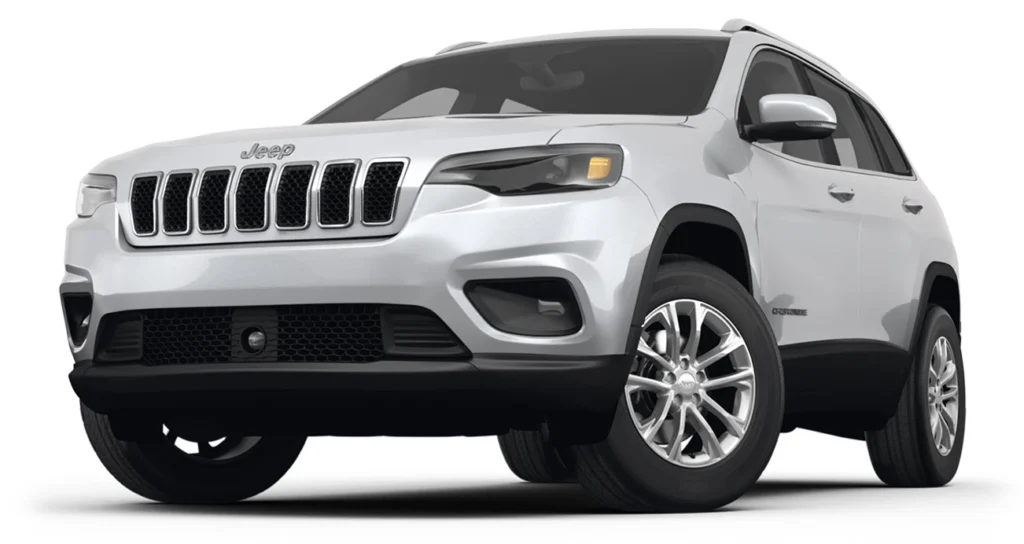
Pros
Trailhawk trim offers unique off-road capability for a small crossover
Capable and user-friendly 8.4-inch touchscreen on many models
Numerous options and packages to fit your needs
Cons
Small interior for the segment
Sluggish acceleration with the base 2.4L engine
Not as modern as some of the competition
The Jeep Cherokee falls in between the smaller Compass and larger Grand Cherokee in the Jeep lineup. True to Jeep form, many 4WD options allow for a variety of different adventures. Jeep’s Active Drive I is the base 4WD system suitable for on-road and mild off-road duty, engaging the rear wheels when additional traction is needed. Jeep’s Active Drive II allows for further exploring with its ability to deliver power evenly to the front and rear wheels. Trailhawk models are the most adventurous and allow you to take on terrain most others in this class cannot, from rock climbing to mud bogging.
Additional features in the 2017–2022 Jeep Cherokee include:
Off-road focused Trailhawk model features go-anywhere 4WD technology
Up to five selectable drive modes for additional traction
Blind-spot monitoring and adaptive cruise control with forward-collision warning
Sliding and 60/40 split-folding rear seat and up to 54.7 cu-ft of cargo space
6. Ford Explorer

Pros
Available hybrid powertrain
Strong engines for quick acceleration
The rear-wheel drive platform improves handling and towing
Cons
Too much wind noise at highway speeds
Lackluster interior materials
The Ford Explorer is a defining go-anywhere 4WD SUV and has been since it was introduced in 1991. Fast forward to the present and Ford continues to make the Explorer relevant for families and adventurers alike. Completely updated for the 2020 model year, the Explorer soldiers on into its sixth generation with 87.8 cu-ft of cargo space when the second and third rows are folded flat.
Built on an RWD-biased platform, the 2020–2022 4WD-equipped models feature a new Terrain Management System with seven selectable drive modes for optimum traction under most conditions. No matter what life you lead, there’s an Explorer for you with trims including a well-equipped base model, more upscale trims, a performance ST, and the luxurious Platinum. All five trim levels can be optioned with 4WD, though the top two trims—ST and Platinum—are available solely as 4WD models.
Additional features in the 2020–2022 Ford Explorer include:
New-for–2021 Timberline trim with skid plates and a limited-slip differential for added traction
Seven selectable drive modes for additional traction
FordCoPilot360 with BLIS blind-spot monitoring
7. Jeep Compass

Pros
Easy-to-use infotainment system
The Trailhawk version is highly capable off-road
Updated interior for 2022 makes it a baby Grand Cherokee
Cons
Four-cylinder engine’s weak power delivery
Transmission that can be slow to respond
Off-road focus impacts interior space
The Jeep brand is synonymous with off-road driving and one of its smallest offerings, the Jeep Compass, comes in many flavors to fit your lifestyle. Completely redesigned for the 2017 model year, and updated again for the 2022 model year, the Compass has five trims including the base Sport, luxurious Limited, and off-road-focused Trailhawk.
The available 4WD systems include an optional Selec-Terrain Traction Management system, which tailors shift patterns and engine response for peak traction in snow, rain, sand, or mud. The 4WD system even comes with a crawl gear for low-speed maneuverability off-road—perfect if you’re heading deep into the wilderness. Whether it’s exploring trails or tackling rough weather, Jeep’s Active Drive system is ready to assist you however and whenever you need it.
Additional features of the 2017–2022 Compass include:
Standard, naturally aspirated 2.4L four-cylinder engine
Five selectable terrain modes for additional 4WD traction
Highway Assist with lane departure warning
60/40 split-folding rear seat and up to 59.8 cu-ft of cargo space
8. Subaru Forester

Pros
Great visibility out of the tall windows
Great cargo capacity for a compact SUV
Comfortable ride
Cons
Engine is underpowered
Only available with a continuously variable transmission
Modest tow rating limits maximum utility
As with all its models, Subaru’s Forester SUV comes standard with its legendary Symmetrical AWD. This five-passenger compact crossover SUV maintains traction on slippery highways and dirt trails through the standard Vehicle Dynamics Control, which detects and corrects wheel spin as it happens. 8.7 inches of ground clearance also add to the rugged appeal of this AWD SUV. Taking it up a notch further, for 2022 Subaru unveiled the Wilderness trim with 0.5 inches of additional ground clearance, upgraded wheels, and improved suspension for further off-road prowess. Your next adventure will be easy to pack for with the Forester’s ample 74.3 cu-ft of maximum cargo space with the rear seats folded.
Additional features of the 2020–2022 Forester include:
Standard, naturally aspirated 2.5L four-cylinder engine
Standard Driver-Selectable Subaru Intelligent Drive (SI-DRIVE)
EyeSight® Technology with lane centering and lane departure
9. Toyota RAV4
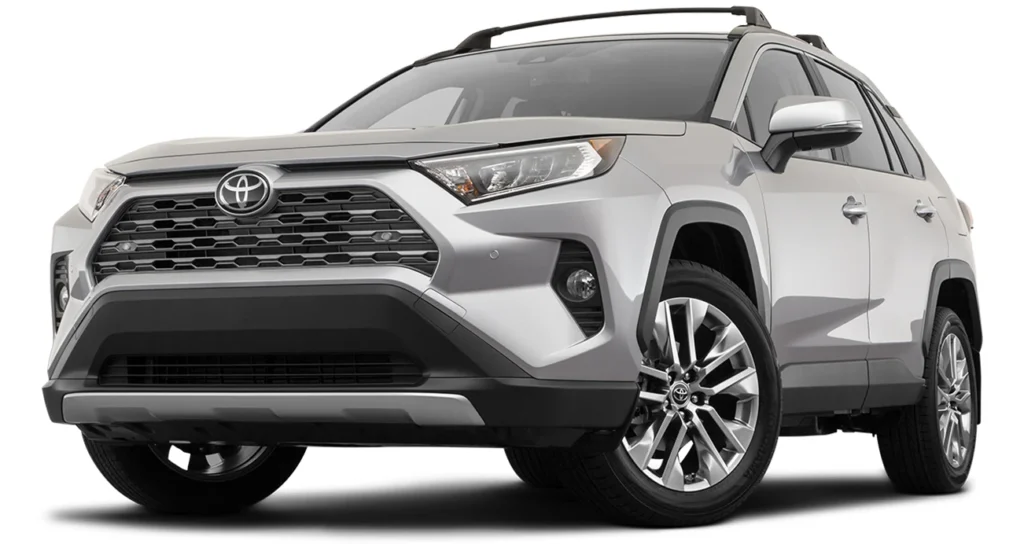
Pros
Abundant cargo and passenger space
Quiet interior and comfortable ride quality
Easy to use controls
Cons
Somewhat dull driving personality
Vague steering means you’ll sometimes misjudge your inputs
The optional AWD on every trim of the 2017–2018 model year Toyota RAV4 comes with Dynamic Torque-Control, which uses different systems throughout the vehicle to properly distribute power to the wheel or wheels with the most grip. Debuting with the 2019 model year redesign, newer RAV4 models include Toyota’s Multi-Terrain Select on AWD-equipped vehicles. MTS, as it is labeled in the vehicle, allows you to select the terrain you are on and can help you find your next adventure without the worry of losing traction. For the 2020 model year, the TRD Off-Road trim ups the ante further with upgraded suspension and wheels.
Features of the 2019–2022 Toyota RAV4 include:
Standard, naturally aspirated 2.5L inline four-cylinder engine
Available panoramic glass roof
60/40 split-folding rear seat and up to 69.8 cu-ft of cargo space
10. Ford Escape
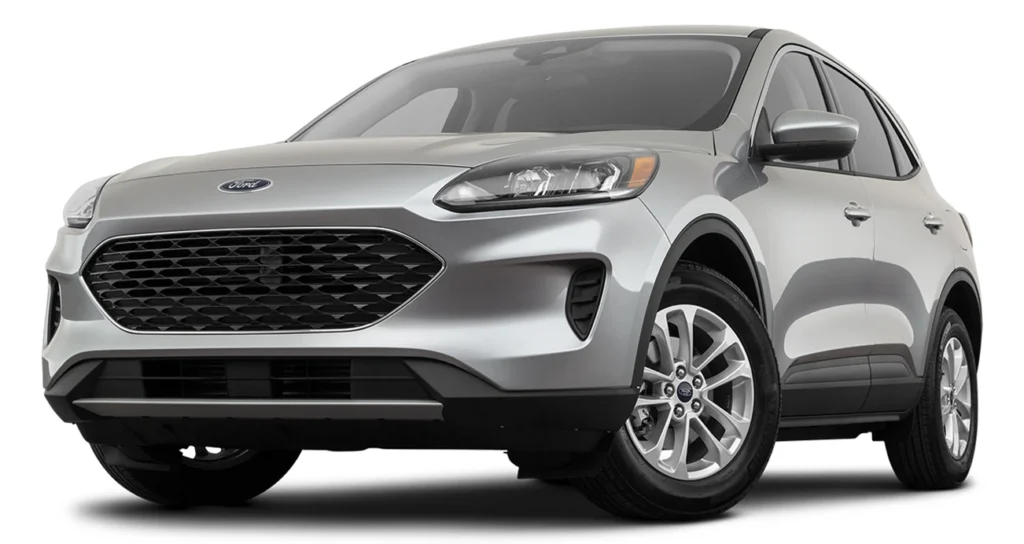
Pros
Sliding second row allows for configurability between passengers and gear
Great ride
2020 hybrid and plug-in hybrid models offer an EPA-estimated 40 mpg†
Cons
Slow acceleration & numb steering
Bland and generic SUV styling
The compact Ford Escape received a full redesign for the 2020 model year, marking the start of its fourth generation. While the third-generation Escape (2013–2019) did not offer AWD in base S trim, the 2020 and newer models offer AWD as an option across the model range (excluding the three plug-in hybrid trims). The gas-powered Titanium trim also comes exclusively as an AWD model. 60/40 split-folding and sliding rear seats mean that you can find the right mix of space for passengers and cargo, giving you a max of 65.4 cu-ft of cargo space with the rear seat folded.
Additional features in the 2020–2022 Ford Escape include:
Standard AdvanceTrac stability control system
FordCoPilot360™ with BLIS® blind-spot monitoring
Sliding and 60/40 split-folding rear seat
